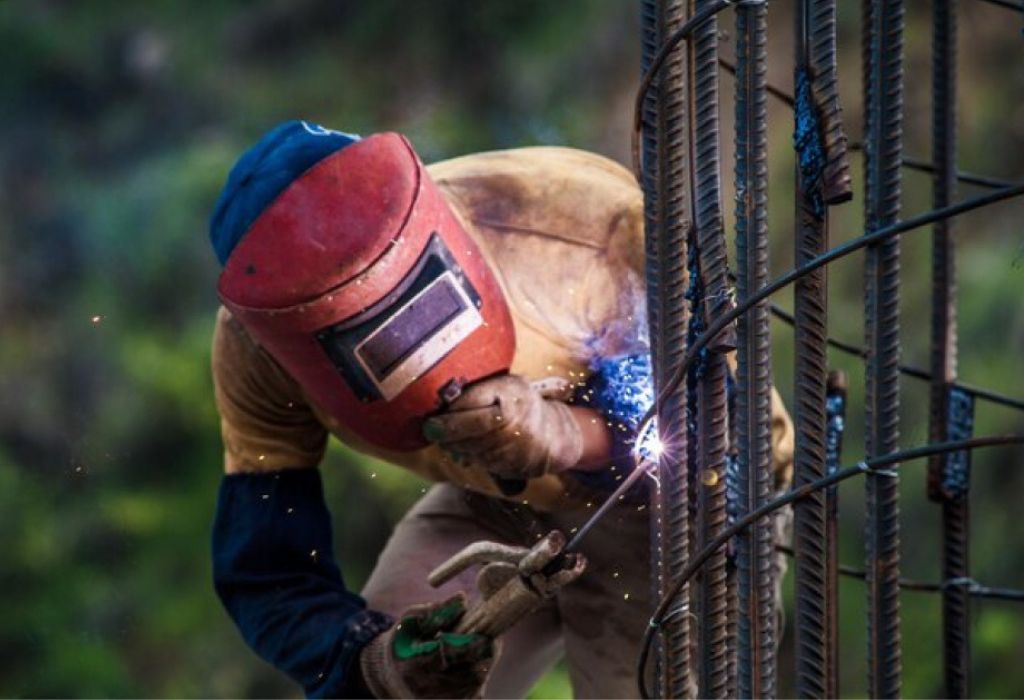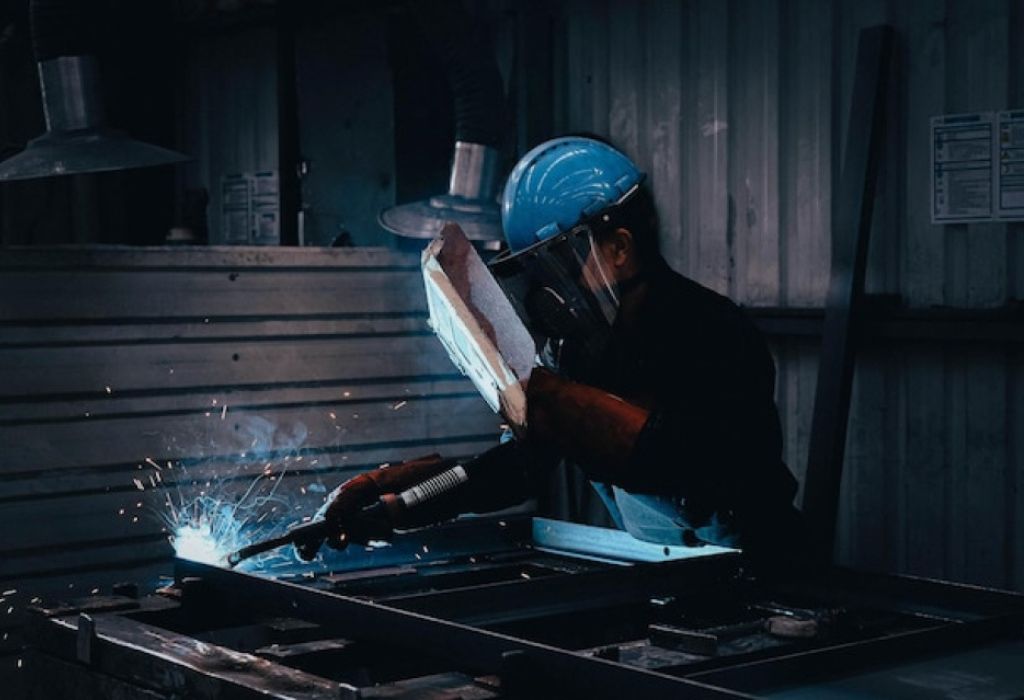In a busy fabrication shop, sparks fly as a seasoned welder inspects the steady hands of an apprentice.
The question hanging in the air is one many beginners ask: how long does it take to become a master welder?
For newcomers, the term “master welder” can feel mysterious. Some believe it is an official title, while others see it as the highest level of skill gained through years of practice.
The path is not a short one. Unlike a weekend skill, welding mastery demands thousands of hours of hands-on training, classroom learning, and certifications.
The U.S. Department of Labor notes that registered apprenticeships in welding often last 3 to 4 years, requiring 6,000 to 8,000 hours of on-the-job training combined with classroom instruction source.
Even after completing these programs, welders continue refining their craft before reaching advanced recognition.
The payoff, however, is significant. According to the Bureau of Labor Statistics, the median annual wage for welders is over $50,000, with experienced welders in specialized industries earning far more.
Beyond income, mastery brings prestige, job security, and the ability to tackle the most demanding projects in construction, manufacturing, and energy.
This guide breaks down what it truly means to be called a “master welder,” how long the journey usually takes, the certifications that matter, and how to speed up progress without cutting corners.
By the end, you will understand not just the timeline but also the skills and milestones that separate a beginner from a master in this essential trade.
What Does Master Welder Actually Mean?

The title “master welder” is not an official license but a recognition of advanced skill. It usually refers to welders who have completed years of training, gained multiple certifications, and mastered various processes such as MIG, TIG, Stick, and Flux-Cored welding.
These welders can work on critical projects where mistakes are unacceptable, like bridges, pipelines, ships, and nuclear facilities. They often become mentors, instructors, or supervisors guiding new welders.
How long does it take?
- Typically 7–10 years of combined training and work experience.
- Includes apprenticeship, certification, and years of practical work.
Key abilities of a master welder:
- Mastery of multiple welding processes.
- Ability to read complex blueprints.
- Understanding metallurgy and welding codes.
- Leadership and mentoring skills.
How Long Does Training Usually Take?
The foundation to becoming a master welder starts with formal training. Most welders begin in a trade school or community college program that lasts 6–18 months. This training covers basics like safety, blueprint reading, and entry-level welding techniques.
Apprenticeships extend the process. They last 3–4 years and combine on-the-job training with classroom learning. Apprentices earn wages while developing practical skills.
After apprenticeship, welders must accumulate years of job experience. Only through repetition and working on diverse projects do they reach the expertise considered “master level.”
Estimated timeline to mastery:
- School training: 1 year
- Apprenticeship: 3–4 years
- Experience and certification: 3–5 years
- Total: Around 7–10 years
Questions
Is a college degree required?
No, trade schools and certifications are more important than a degree.
Can online welding courses replace hands-on training?
No, welding is hands-on; online courses can only supplement.
Do apprenticeships pay?
Yes, apprenticeships usually provide wages while learning.
Certifications Needed for Mastery
Certifications prove competence and are essential for welders aiming for mastery. The American Welding Society (AWS) offers widely recognized credentials such as:
- Certified Welder (CW) – Entry-level test for different processes.
- Certified Welding Inspector (CWI) – Advanced certification for inspection and supervision.
- Certified Welding Educator (CWE) – For welders teaching others.
- Specialized endorsements for pipe welding, underwater welding, and structural welding.
Each certification requires exams, renewals, and proof of experience. A master welder often holds multiple AWS credentials.
Questions
Are certifications mandatory?
For most industries, yes—especially structural and pipeline welding.
How much do certifications cost?
Entry-level tests can cost $300–$1,000, advanced ones more.
Do certifications expire?
Yes, most AWS certifications must be renewed every 6 months to 3 years.
Skills Beyond Welding
Technical skills are essential, but mastery also includes soft skills. Employers and unions look for welders who can lead, solve problems, and adapt.
Essential soft skills include:
- Attention to detail – tiny flaws can weaken structures.
- Communication – master welders explain techniques to juniors.
- Leadership – many manage teams or projects.
- Critical thinking – knowing which process suits a material.
Questions
Is leadership training part of welding education?
Not formally, but many master welders gain it on the job.
Do master welders need math?
Yes, geometry and trigonometry are used daily.
Is blueprint reading necessary?
Absolutely, as welders must interpret technical drawings.
Industry Experience and Specialization
Experience is the difference between a skilled welder and a master welder. Mastery requires exposure to multiple industries, each with unique demands.
- Construction: Bridges, skyscrapers, structural welding.
- Shipbuilding: Precision welding in marine conditions.
- Oil & Gas: High-pressure pipelines with strict codes.
- Aerospace/Nuclear: Critical welds with no room for error.
Master welders usually specialize in one field, but their skills are transferable.
Questions
Can a welder switch industries easily?
Yes, though additional certifications may be required.
Which industry pays most?
Oil & gas and nuclear welding often pay the highest.
Do master welders travel for work?
Yes, many travel nationally or internationally for contracts.
How to Speed Up the Journey

Becoming a master welder is time-intensive, but smart choices can shorten the timeline:
- Choose accredited schools with AWS-recognized programs.
- Seek apprenticeships early for hands-on experience.
- Collect multiple certifications to expand job opportunities.
- Work in challenging industries where standards are higher.
- Continue learning – new technologies like robotic welding evolve constantly.
Questions
Can you become a master welder in under 5 years?
Unlikely, since mastery requires both experience and certifications.
Does military welding experience help?
Yes, military-trained welders often fast-track into civilian mastery.
Are robotic welding skills valuable?
Yes, automation knowledge boosts career advancement.
Salary and Career Outlook
Master welders enjoy higher pay and more job security.
- Entry-level welders: $35,000–$45,000 annually.
- Certified welders with 3–5 years experience: $50,000–$70,000.
- Master welders in specialized industries: $80,000–$120,000+.
The Bureau of Labor Statistics projects steady demand for welders due to aging infrastructure and global construction growth.
Questions
Do union welders earn more?
Yes, union contracts often guarantee higher wages.
Can master welders become inspectors or teachers?
Yes, many transition into inspection, teaching, or management.
Is welding a stable career?
Yes, welding skills are in demand worldwide.
Conclusion
So, how long does it take to become a master welder? On average, expect 7–10 years of training, apprenticeships, certifications, and real-world experience. Mastery is not just about time—it’s about dedication, safety, and continuous learning.
Master welders stand at the top of their trade, earning respect, higher wages, and opportunities across industries. For anyone willing to commit years of effort, the reward is a secure, respected, and fulfilling career in welding.

I’m Darrell Julian, the founder, lead writer, and hands-on welding enthusiast behind ArcWeldingPro.com. With more than 15 years of real-world welding experience, I created this platform to share what I’ve learned in the field, in the shop, and in the heat of the arc.


